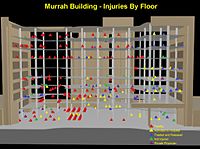
Photo from wikipedia
The auditory organs, including the tympanic membrane, cochlea, and central auditory pathway, are the most fragile components of the human body when exposed to blast overpressure. Tympanic membrane perforation (TMP)… Click to show full abstract
The auditory organs, including the tympanic membrane, cochlea, and central auditory pathway, are the most fragile components of the human body when exposed to blast overpressure. Tympanic membrane perforation (TMP) is the most frequent symptom in blast-exposed patients. However, the impact of TMP on the inner ear and central auditory system is not fully understood. We aimed to analyze the effect of blast-induced TMP on the auditory pathophysiological changes in mice after blast exposure. Mice aged 7 weeks were exposed to blast overpressure to induce TMP and allowed to survive for 2 months. All TMP cases had spontaneously healed by week 3 following the blast exposure. Compared to controls, blast-exposed mice exhibited a significant elevation in hearing thresholds and an apparent disruption of stereocilia in the outer hair cells, regardless of the occurrence or absence of TMP. The reduction in synapses in the inner hair cells, which is known as the most frequent pathology in blast-exposed cochleae, was significantly more severe in mice without TMP. However, a decrease in the number of excitatory central synapses labeled by VGLUT-1 in the cochlear nucleus was observed regardless of the absence or presence of TMP. Our findings suggest that blast-induced TMP mitigates peripheral cochlear synaptic disruption but leaves the central auditory synapses unaffected, indicating that central synaptic disruption is independent of TMP and peripheral cochlear synaptic disruption. Synaptic deterioration in the peripheral and central auditory systems can contribute to the promotion of blast-induced hearing impairment, including abnormal auditory perception.
Journal Title: Journal of neurotrauma
Year Published: 2022
Link to full text (if available)
Share on Social Media: Sign Up to like & get
recommendations!